From today’s Autism Society of PEI newsletter:
The Autism Society of PEI and the PEI Public Library Service are happy to partner on a new collection sharing initiative. Islanders can now access the Autism Society’s in-house collection with their PEI Public Library card. Members of the public can search and request these materials through the library’s online catalogue and have them delivered directly to their local library. Thank you to the PEI Public Library for this great partnership opportunity!
This is tremendous news, and a fantastic move forward given the previously muddled situation with autism resources.
You can see all of the available resources like this:
- Go to the Public Library Service catalogue in your browser.
- Click Advanced Search.
- Select “Autism PEI” under Location.
- Click Search.
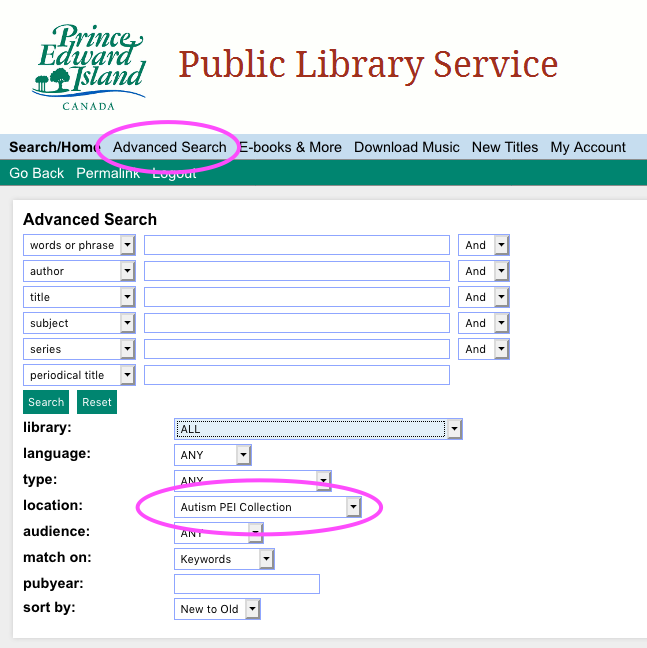
As of this writing there are about one hundred items in this collection, from 101 tips for the parents of boys with autism to Video modeling for young children with autism spectrum disorders. The ability to order these resources for delivery to one of the 26 library branches across the Island makes the collection so much more valuable than when items were only available from the Autism Society’s office in Charlottetown.
This is also a good example of interlibrary cooperation in general: there are myriad resource libraries held by non-profit organizations and institutions across the Island, with collections that could benefit greatly from exposure to a wider audience. Cooperative projects like this leverage the curatorial skills of subject-matter-expert organizations with the visibility, systems and logistics expertise of the Public Library Service.
Bravo!
Printing my ink vial holder last night on the 3D printer took a lot longer than I thought it was going to, and I had to leave the office for supper midway through the print.
I didn’t want to leave the printer unsupervised lest something go wrong and I burn down the Parish Hall, so I took advantage of the OctoPrint feature that streams a view of the printer to a browser and also of the Android “split screen” feature that allows two apps to run at the same time, to watch YouTube and the 3D printer at the same time:
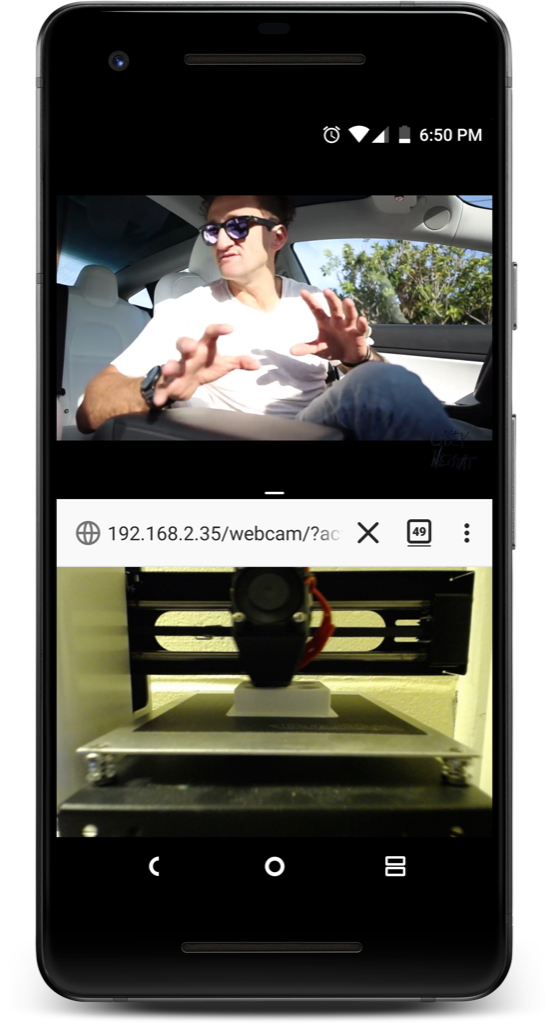
I finally found a Canadian source for good quality typewriter ribbons: Toronto Typewriters. I ordered a Big 3 Combo a couple of weeks ago, and it arrived yesterday.
The “Big 3” are a black, a black/red, and a purple; I installed the purple and it’s like I have a new typewriter:

That’s a line from Marlene on the Wall, by Suzanne Vega that’s always stuck with me since I first heard it:
Even if I am in love with you
All this to say, what’s it to you?
Observe the blood, the rose tattoo
Of the fingerprints on me from you
As I related in October, my friend Nene turned me on to the world of Pen Chalet fountain pen ink samples, and starting from her lovely gift of a sample of Morning Star ink, I’ve acquired a small fleet of 4 ml vials of my own.
The only downside of the tiny sample vials from Pen Chalet is that it’s hard to keep them upright: they’re top heavy, and so whether on a table or in a drawer, I find they’re forever falling over on me.
Not such a bad thing, really.
Unless I have the top off to refill a pen (fortunately this hasn’t happened yet).
I set out this afternoon to solve this problem: I used my calipers to find that the diameter of the vials is 16mm and then designed a 3D model of an “ink vial holder” in Tinkercad:
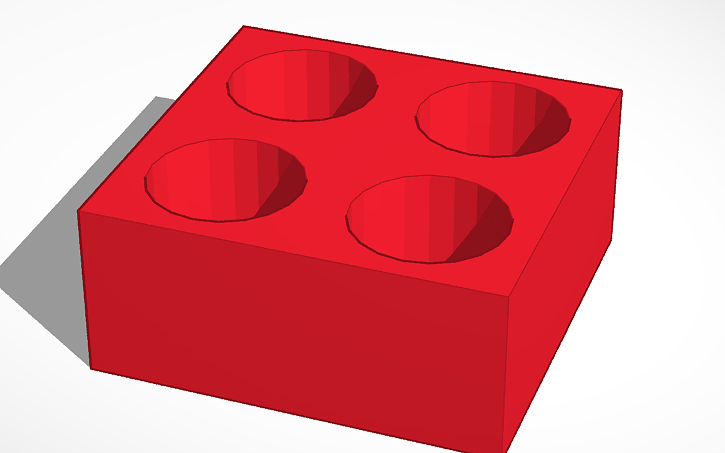
I printed the model on my Monoprice Select Mini 3D printer this afternoon and the result does exactly what I set out to have it do, holding four Pen Chalet sample vials upright:
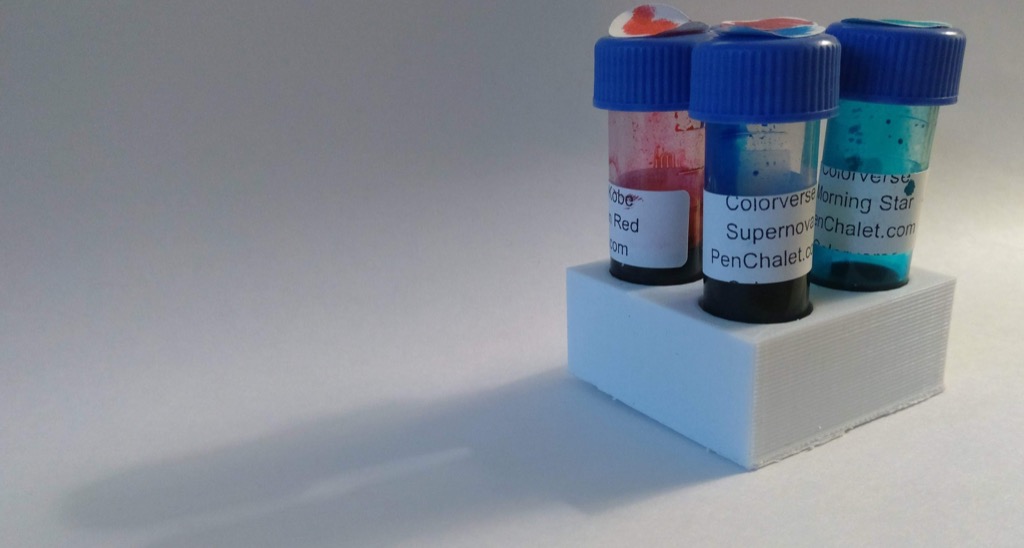
An unintended side-effect of the design is that it also works really well for moving the vials around; it reminds me of those boards used to transport sampler flights of beer:
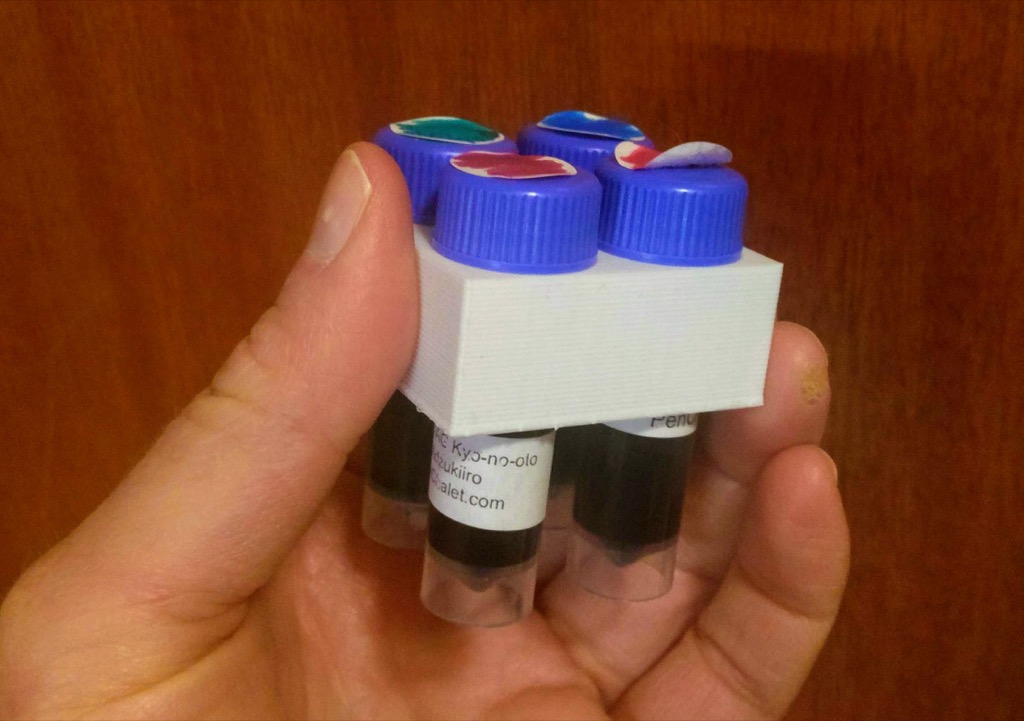
Keen-eyed readers will note that my ring finger in the photo above bears witness to accidentally touching the “hot end” of the 3D printer a few weeks ago when making an adjustment. As burns go, this one went very well and served mostly as a lesson to me to never touch the hot end of a 3D printer.
William Denton is selling copies of a limited edition of a book version of Listening to Art.
I like his pricing:
While I have supplies, copies are available at a special price: $20 Canadian for Canadians, $20 US for Americans, and €20 for people anywhere else in the world.
At today’s exchange rate, this translates to:
- $20 Canadian = $20 Canadian
- $20 US = $26.53 Canadian
- €20 = $30.47 Canadian
The result is nice even-numbered shipping that seems reasonable to Canadian, Americans and Europeans all, but that builds in an allowance for the increased shipping costs attached to each.
(For example, the Canada Post lettermail rate for a large envelope for weighing 400 g is $5.78 to Canada, $10.90 to the USA, and $21.80 to Sweden).
Euan Semple writes, in Fear, and loss of control, in part:
Life keeps on happening, without our control. We are out of control. We don’t even control our own thoughts never mind the world around us. Deep down we know this and numb ourselves to the fear it induces with mindless media, sugary food, or alcohol.
But something magical happens when we stop worrying about our lack of control. We can still take actions, we can still think thoughts, we can still affect the world around us, we just stop worrying about whether things turn out as we expect. We stop piling stress on top of the lack of knowledge of how things will end up.
Rather than inhibiting us, the acknowledgement of our total lack of control makes it easier for us to take action. We stop worrying and do stuff. We enjoy going along for the ride and worry less about where we are going. In doing so we might just get somewhere magical - again and again.
Having a partner with an incurable illness has taught me this empirically: I am someone who likes order, and predictability; snow days weird me out; I get discombobulated when my shaver gets moved to a different shelf or when I can’t find my phone charger where I left it.
Needless to say, introducing cancer into the mix rendered that way of thinking unworkable.
While I can’t make any great claims about calming down about snow days and shavers and phone chargers, I do believe I’ve gained some small amount of “grace to accept with serenity the things that cannot be changed,” and to, as Semple writes, “stop piling stress on top of the lack of knowledge of how things will end up.”
Back in the day when television was still television and we all gathered around the hearth to watch CBC (the only channel we picked up on the rabbit ears), CBC’s Land and Sea was a perennial favourite (longtime readers will recall this episode about the Charlottetown Farmer’s Market that captured wee Oliver and me).
For some reason–perhaps its website, not updated since 2014–I’d assumed that the program had long ceased production. And so I was surprised to hear a piece on Mainstreet this afternoon promoting an upcoming episode about Prince Edward Island.
It turns out that Land and Sea is still very much alive, and is in its 18th season. The website is, a friendly and helpful person at CBC Communications in Halifax tells me, a vestigial one that needs re-pointing: CBC Gem is the place to find Land and Sea now, I was told. And, indeed, there are 10 seasons of back-episodes ready there for the watching.
Welcome back, Land and Sea!

It’s only once you enter the hand-cut, hand-printed, hand-folded, hand-perforated, hand-bound notebook manufacturing game that you realize why there aren’t more such notebooks in the marketplace: all that cutting, printing, folding, perforating and binding takes time. Especially when you’re doing it 23 times over.
For example, you think “each notebook will have 10 signatures, to make 20 perforated pages.” That seems simple enough. But then you realize that 23 notebooks need 230 signatures, each of which needs to be cut, folded, perforated and bound.
Fortunately, the work is relaxing, and I don’t have a supervisor on my case about making my quota for the day.
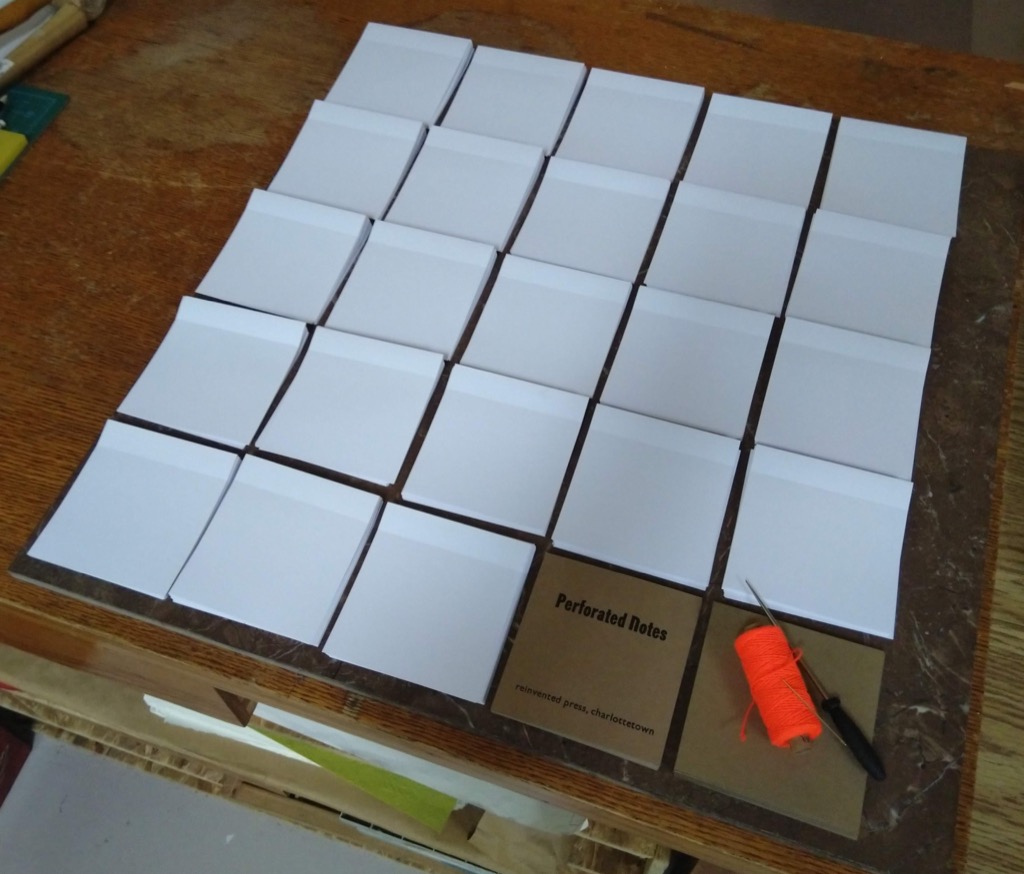
Sometime last year the CBC Prince Edward Island News website got updated, and in the process, it became effectively useless on my mobile phone.
While nominally “mobile friendly,” whatever framework the CBC decided to use for its updated website renders very slowly and confusingly (with images loading and the resizing after a delay), and responds erratically to navigation (often retrieving the wrong story because it misinterprets my taps). It’s very frustrating to use.
As the CBC is an important news source on Prince Edward Island, I set out to try to solve the issue, using Node-RED, the handy visual programming system that I’ve used before with my sensor experiments.
Here’s the Node-RED flow that I came up with:

In a nutshell, here’s what this flow does:
- Retrieves the CBC Prince Edward Island RSS feed.
- Parses the RSS feed to extract each headline, and uses these to assemble a simple HTML page; each story is linked to the faster-loading AMP version of itself, rather than to the full-blown web version.
- Returns the HTML.
The simple page it returns looks like this on my mobile phone:
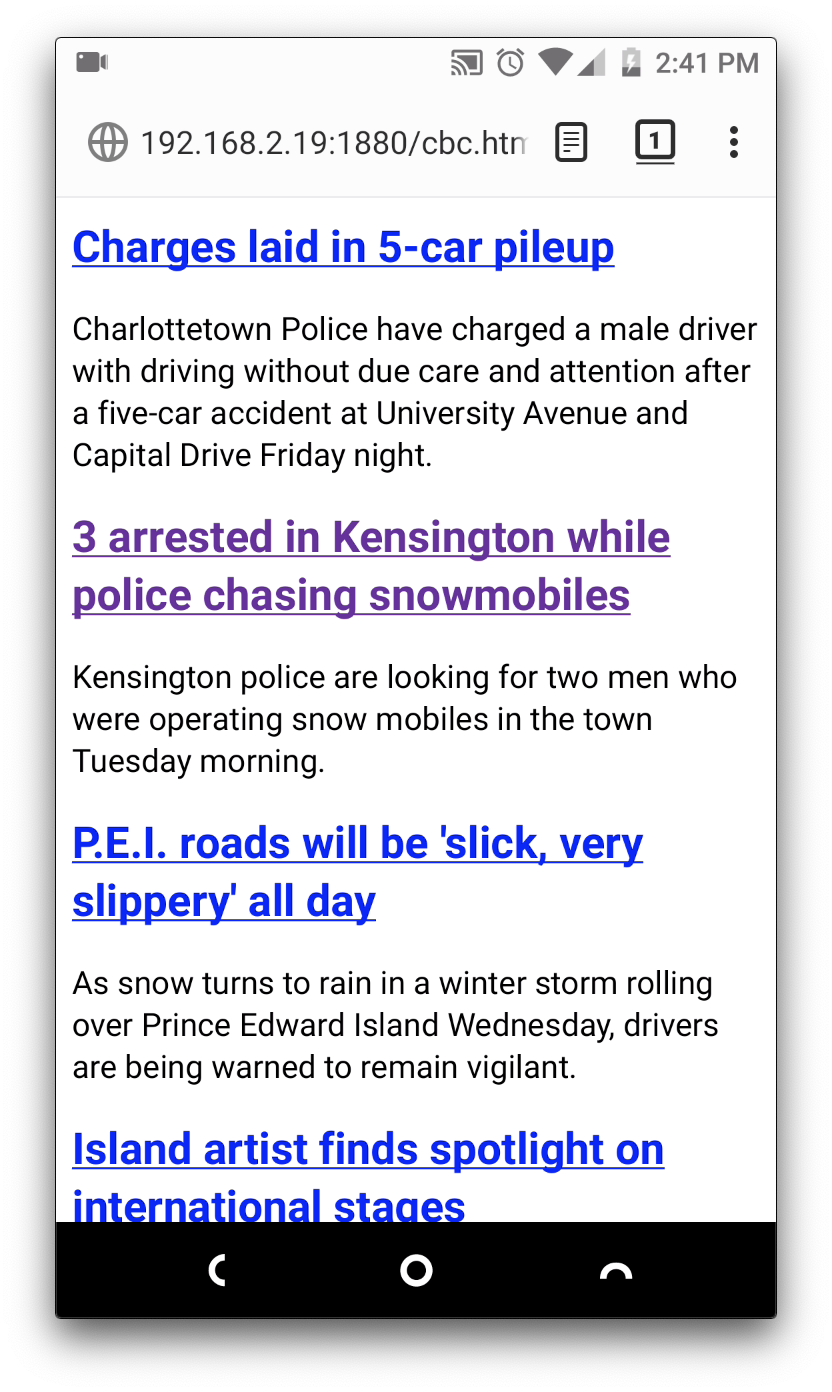
More important than the simplicity of the page, however, is how quickly the page is returned, and how easy it is to navigate. Even with all the “grab the RSS feed and parse it and return HTML” machinations–run on a pokey old Raspberry Pi, no less–this all happens quickly.
Here’s a side-by-side screen capture of my stripped-down Node-RED powered page on the left, compared to the CBC’s mobile website on the right, both sessions with a goal of loading the headlines and then navigating to the 3 arrested in Kensington while police chasing snowmobiles story that ran this morning:
It took me 7 seconds to use the Node-RED-powered version to get to the story; using the CBC website it took 30 seconds to get to the same story: not only did everything load more slowly, but I had to wait for everything to load, including the ads, before I could reliably tap on the story from the front page.
If you want to try this yourself, and are set up with Node-RED, you can download my flow and import it.
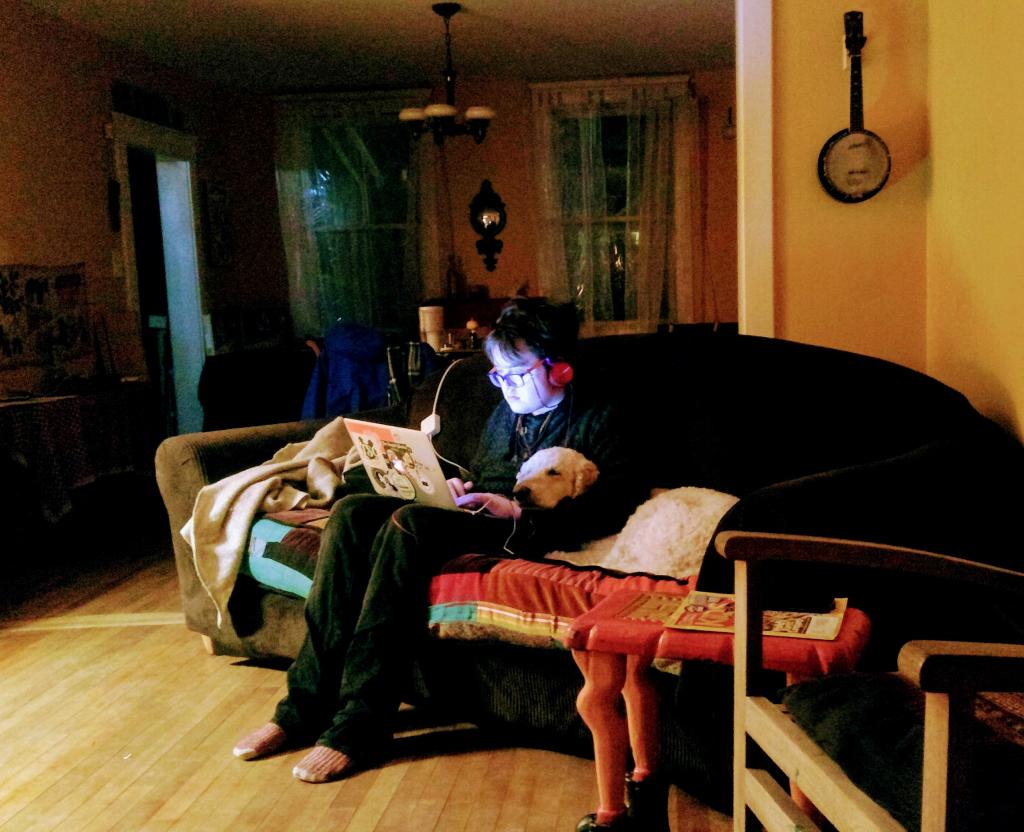
 I am
I am